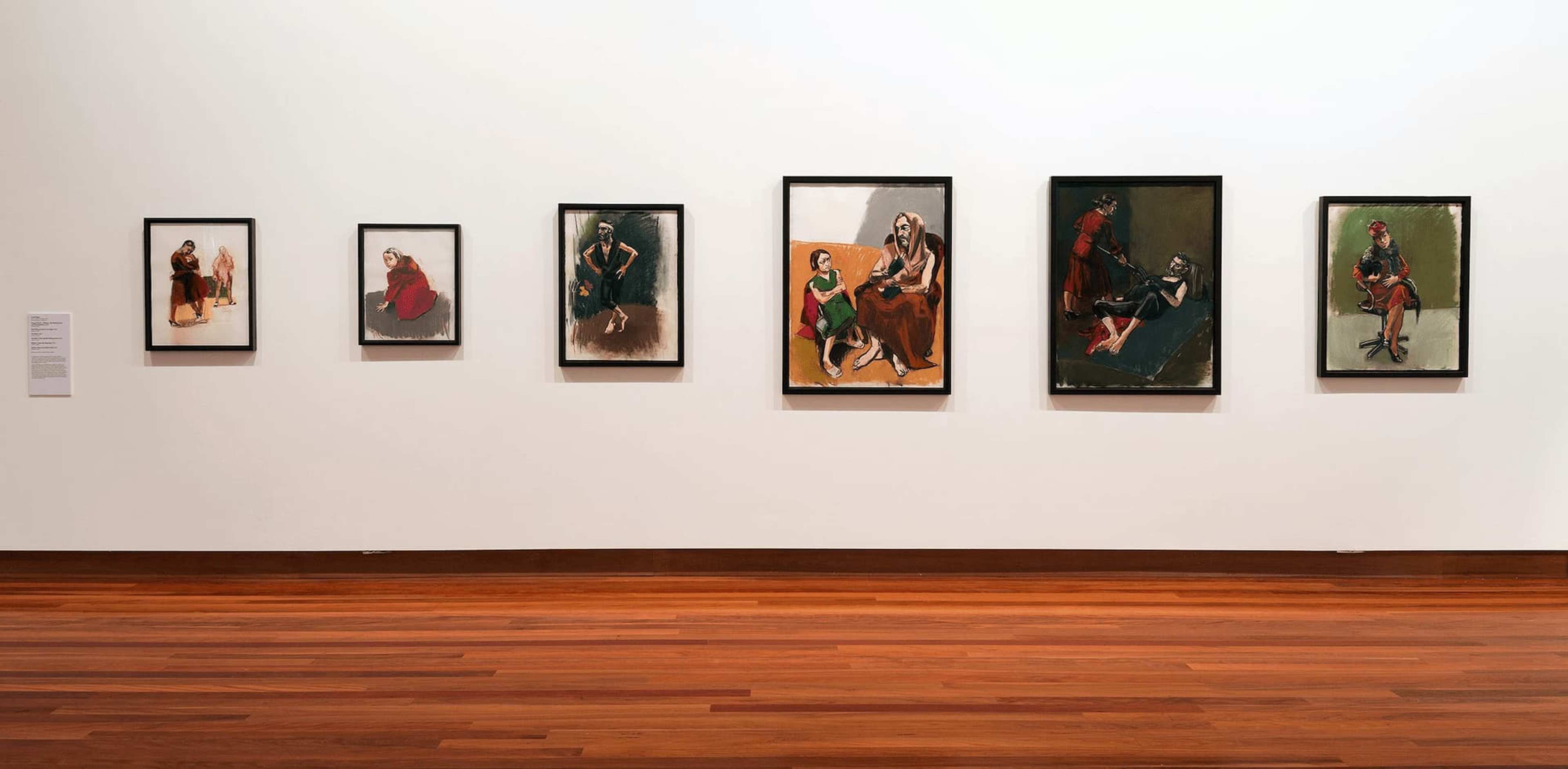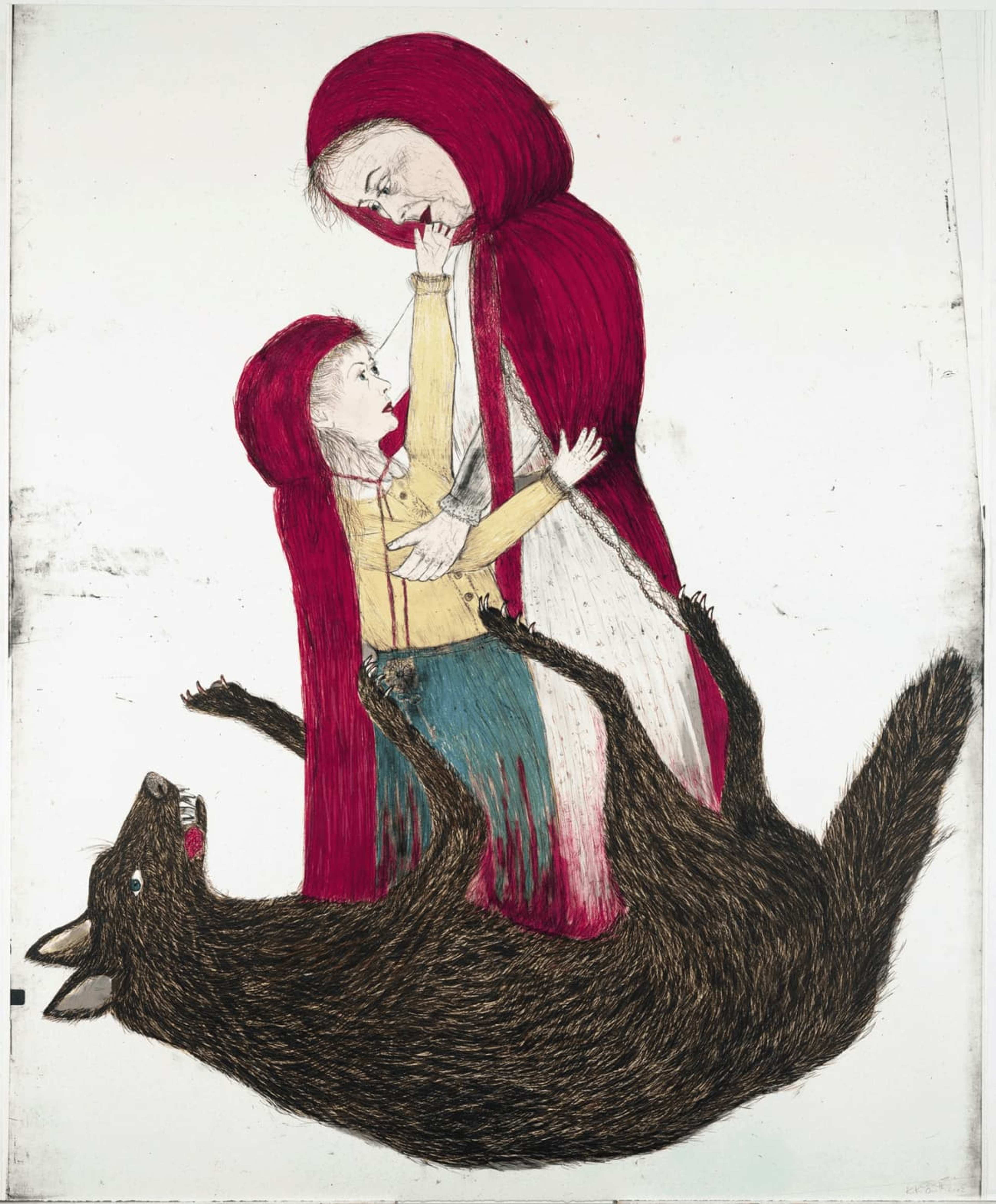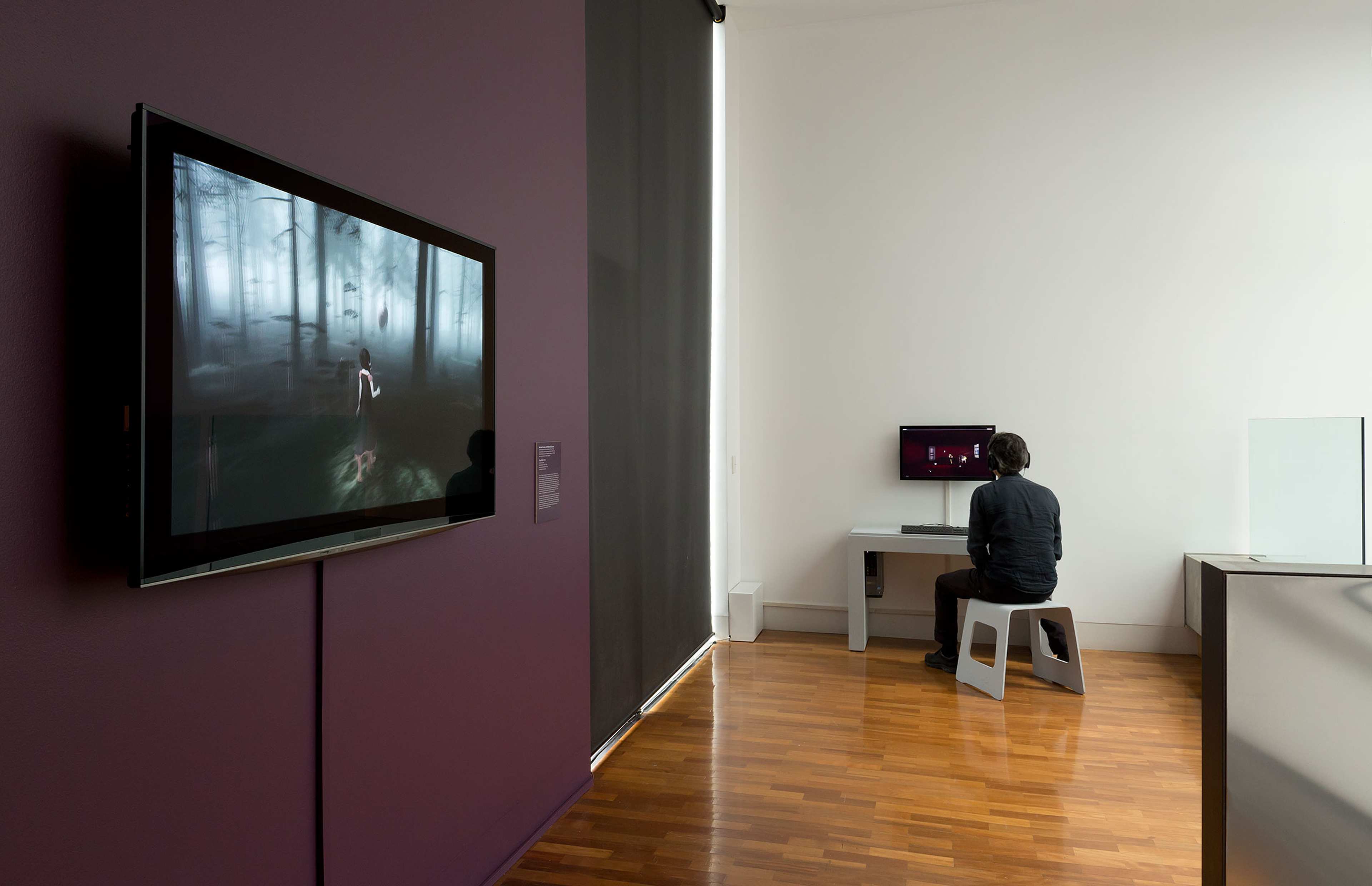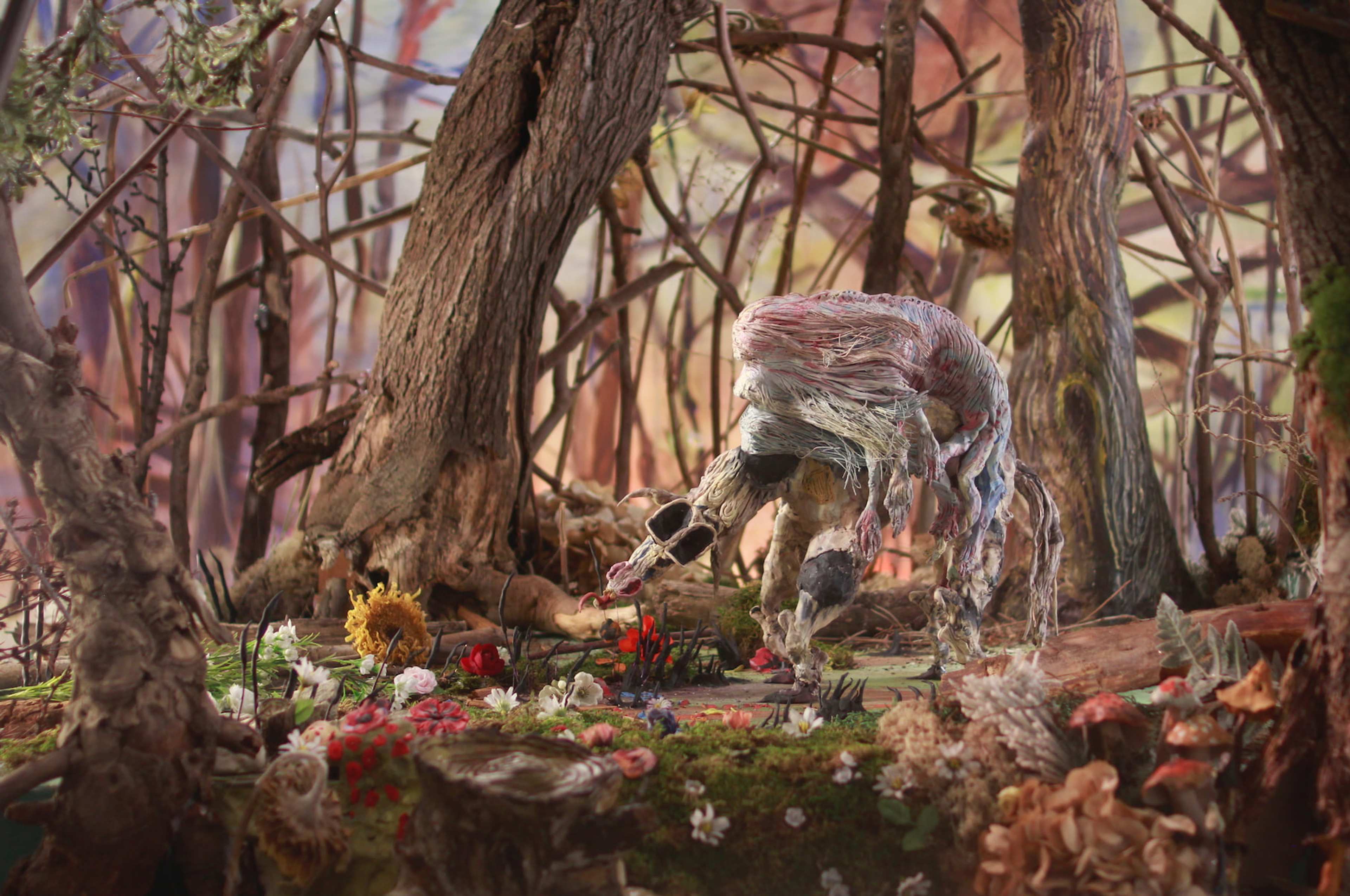Little Red Riding Hood: Adaptations in Art and Media
All the better to see you with: Fairy tales transformed brings together 21 Australian and international contemporary artists. 'Together their works highlight the ability of fairy tales to act as a platform for the expression of social concerns and anxieties around issues such as the abuse of power, injustice and exploitation while also enabling an exploration of notions of transformation, empowerment and the possibility of more helpful outcomes through both their adaption and re-telling.'
‘who in their own way navigate the wonder, delight, fascinating creepiness, and at times, violence and cruelty encompassed within classic fairy tales.’
'Fairy tales report from an imaginary territory–a magical elsewhere of possibility; a hero or heroine or sometimes both together are faced with ordeals, terrors, and disaster in a world that, while it bears some resemblance to the ordinary conditions of human existence, mostly diverges from it in the way it works, taking the protagonist–and us, the story readers or listeners–to another place where wonders are commonplace and desires are fulfilled.’ Marina Warner.
Marina Warner's characterisation of the fairy tale genre in her book Once Upon a Time: A Short History of a Fairy Tale reminds us of one of the most important qualities of this much-loved literary form–fairy tales express hope. For Angela Carter, the spirit of the fairy tale is ‘heroic optimism’, while other commentators brand it as wishful thinking – or blind hope. Fairy tales are dark tales, that sometimes end badly, but just as often lead to unlikely conclusions – the heroine is saved, the princess lives happily ever after, the witch is tricked and burnt in the oven. Fairy tales were often told in the kitchen, at the loom or in the barn while undertaking tedious, repetitive tasks. By suggesting the possibility of hope for a better life, or justice for those who treated them cruelly, these stories served to alleviate the endless drudgery of daily life.
One of the most popular fairy tales to be adapted by artists and writers is that of Little Red Riding Hood. The title for this exhibition All the better to see you with is borrowed from this well-known fairy tale which has long captured the imagination of many artists. In Charles Perrault's Le Petite Chaperon Rouge (1695), perhaps the earliest written version of this story, Red Riding Hood meets a terrible end. While in later versions by the Brothers Grimm and Disney, the little girl is saved by a male protagonist in the form of the father or the huntsman. In Angela Carter's more recent adaptation, The Company of Wolves (1979), Red Riding Hood saves herself by seducing the wolf.
Paula Rego's Subversion of the Narrative
Portuguese-born British artist Paula Rego has often appropriated the fairy tale in her work. She subverts traditional folk stories and fairy tales, adapting these narratives to reflect and challenge the values of contemporary society, playing with feminine roles in culturally determined contexts and turning male dominance on its head. In Little Red Riding Hood (2003) Rego presents an alternative telling of this well-known story. Her suite of drawings is based on Charles Perrault's version of this fairy tale in which the girl and grandmother are eaten by the wolf rather than the more famous Grimm version.
Rego reshapes the story for a contemporary context reflecting oncurrent ideas around gender roles in society and casting the mother as a sharply dressed avenger who overcomes the man wolf without the aid of a male rescuer.

Happy Family – Mother, Red Riding Hood and Grandmother, 2003; Red Riding Hood on the Edge, 2003; The Wolf, 2003; The wolf chats up Red Riding Hood, 2003; Mother Takes Her Revenge, 2003; and Mother Wears the Wolf’s Pelt, 2003
Collection of Gracie Smart, London. Courtesy Malborough Fine Art, London. © Paula Rego
Kiki Smith's Psychological Exploration
While Rego subverts the familiar tale, Kiki Smith moves beyond its established boundaries. Smith's Born (2002) is a complex and compelling lithograph drawn in the style of 19th century illustration. It captures a moment from the Brother's Grimm version of the tale in which the girl and grandmother had been eaten by the wolf and emerged from its stomach unharmed, in this case without the help of the woodsman. The image is bloody and savage, but also tender, suggesting that the girl and the grandmother have been miraculously born from the body of the wolf. The girl touches the face of the grandmother, who is also cloaked in red. The grandmother embraces the child. They are the same person at different ages. The images are in fact both portraits of the artist. The child's face taken from a drawing of the artist as a child. In this work, they are no longer victims and the wolf is no longer the aggressor. There is complicity between characters as Smith plays with the idea of the two figures being released or born from the wolf. Smith's surprising narrative allows her to interrogate ideas around gender and identity, providing a disconcerted view of traditional fairy tales.

Kiki Smith, Born, 2002, lithograph. Published by Universal Limited Art Editions
© Kiki Smith Courtesy of the Artist and PACE Gallery, NY
Tale of Tale's Agency Renegotiated
The Path (2009), a computer game inspired by several versions of Little Red Riding Hood, reveals the ongoing relevance of the fairy tale narrative within contemporary society. With fairy tales influencing game content and becoming an increasingly pervasive activity for children and teenagers, gaming has enabled its young followers to act out and discover situations through archetypes, metaphor, and allegory–forms traditionally occupied by the fairy tale. In The Path, the player can choose from six sisters whose mother sends them on an errand to their sick grandmother. The player can opt to stay on the path or stray from it, and because the game is not played in the traditional sense, as there is no winning strategy, it encourages players to go off the path to gain experience. The artist developers Tale of Tales provide a framework for reshaping the tale, giving young players agency within their own lives.

‘In a world faced with enormous and unprecedented challenge; climate change, massive human movement and rapidly changing political conditions, fairy tales provide a glimpse of light in the darkness. They offer the opportunity to satisfy curiosity and challenge boundaries, and remain an essential form of story-telling in contemporary society.’

